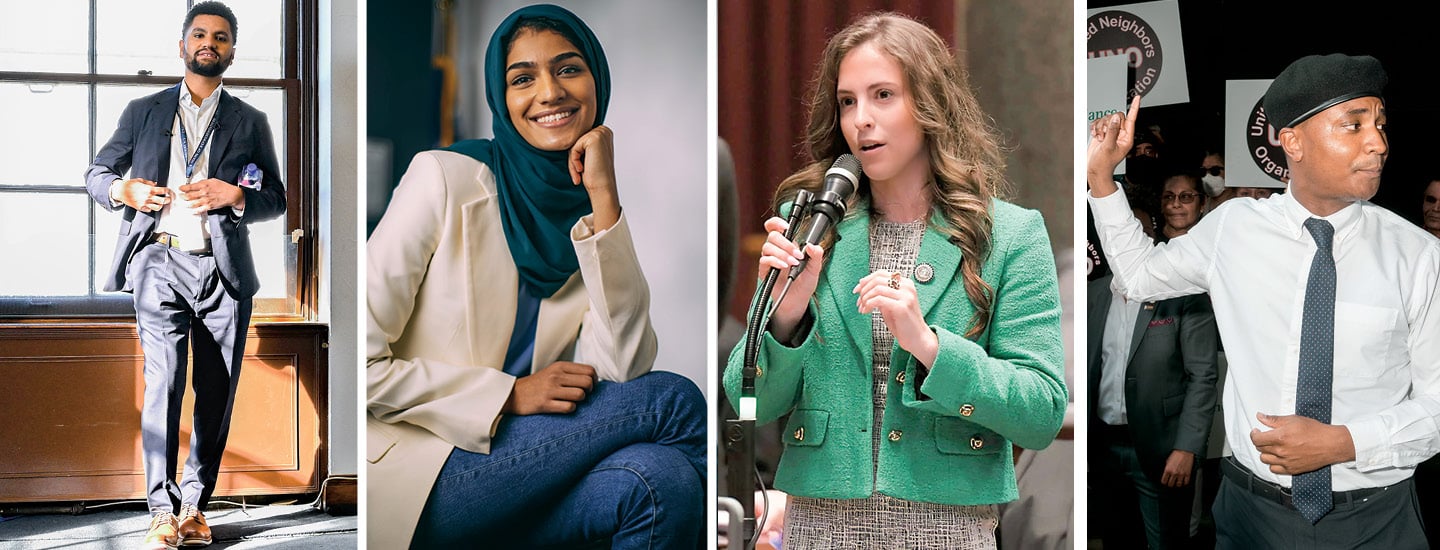“How’s everybody doing?” Representative Maxwell Frost, the first and only member of Gen Z in Congress, asked onstage at a recent event.
At 27, Frost—a Democrat from Florida—stands out not only because of his age, but also because of what he wears. At this event, he had on a dark-green suit and dress sneakers— a sharp contrast with the formal clothes many older politicians don.
It’s not just Frost who’s using fashion to shake up politics these days. Young lawmakers across the nation are eschewing traditional dresses and black, blue, and gray suits with plain ties in favor of things such as bomber jackets, jeans, and bold-pattern tops. Relaxed styles, many of them say, reflect their personalities and appeal to their young constituents. And now, some older elected officials are starting to follow in their footsteps by dressing down more frequently. It’s a sign of the influence that Gen Z lawmakers—those born from 1997 to 2012—are beginning to wield in politics.
“A cool thing about our generation,” Frost says, “is that we’re super open to whatever fashion and whatever creativity people bring to the table.”
“How’s everybody doing?” Representative Maxwell Frost, the first and only member of Gen Z in Congress, asked onstage at a recent event.
At 27, Frost is a Democrat from Florida. He stands out not only because of his age but also because of what he wears. At this event, he had on a dark-green suit and dress sneakers. It is a sharp contrast with the formal clothes many older politicians don.
It’s not just Frost who’s using fashion to shake up politics these days. Young lawmakers across the nation are giving up the traditional dresses and dark suits with plain ties in favor of things such as bomber jackets, jeans, and bold-pattern tops. Relaxed styles reflect their personalities and appeal to their young constituents. And now, some older elected officials are starting to follow in their footsteps by dressing down more frequently. It’s a sign of the influence that Gen Z lawmakers—those born from 1997 to 2012—are beginning to wield in politics.
“A cool thing about our generation,” Frost says, “is that we’re super open to whatever fashion and whatever creativity people bring to the table.”

